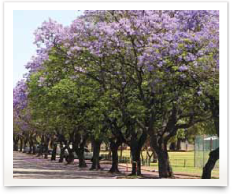
ENSPEC conducts tree inspections using the Visual Tree Assessment (VTA) method that is used throughout the world by professional arborists.
Trained arborists use VTA’s to inspect and assess trees in order to identify any defects or problems that may lead to structural instability or failure. VTA’s are conducted on location because it is important that the tree is thoroughly checked on site, rather than remotely or from photos.
The VTA system is based on the theory of tree biology, physiology and tree architecture and structure,

and is a method used by arborists to identify visible signs on trees that indicate good health or potential problems. Symptoms of decay, growth patterns and defects are identified and assessed as to their potential to cause whole tree, part
tree or branch failure.
If internal or structural problems within a tree are suspected, ENSPEC has the scientific equipment to conduct higher level investigations and assessments; this is an area of expertise that ENSPEC is known for as the industry leader. ENSPEC employs fully qualified arboriculturist with many years experience in conducting tree inspections using the VTA method. A comprehensive inspection (VTA) of the tree or trees is performed in the field by an ENSPEC arboriculturist and a comprehensive, professionally written report is provided to the client. The report gives details of tree health, condition, structural integrity, risk, value, useful life expectancy and recommended remedial works, with detailed advice for a practicing arborist to implement the remedial outcomes of the tree assessment.